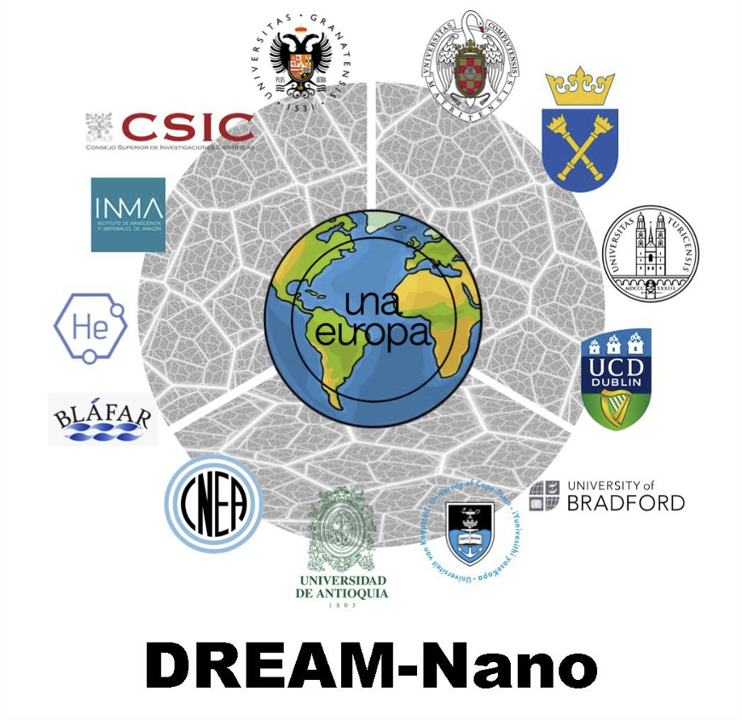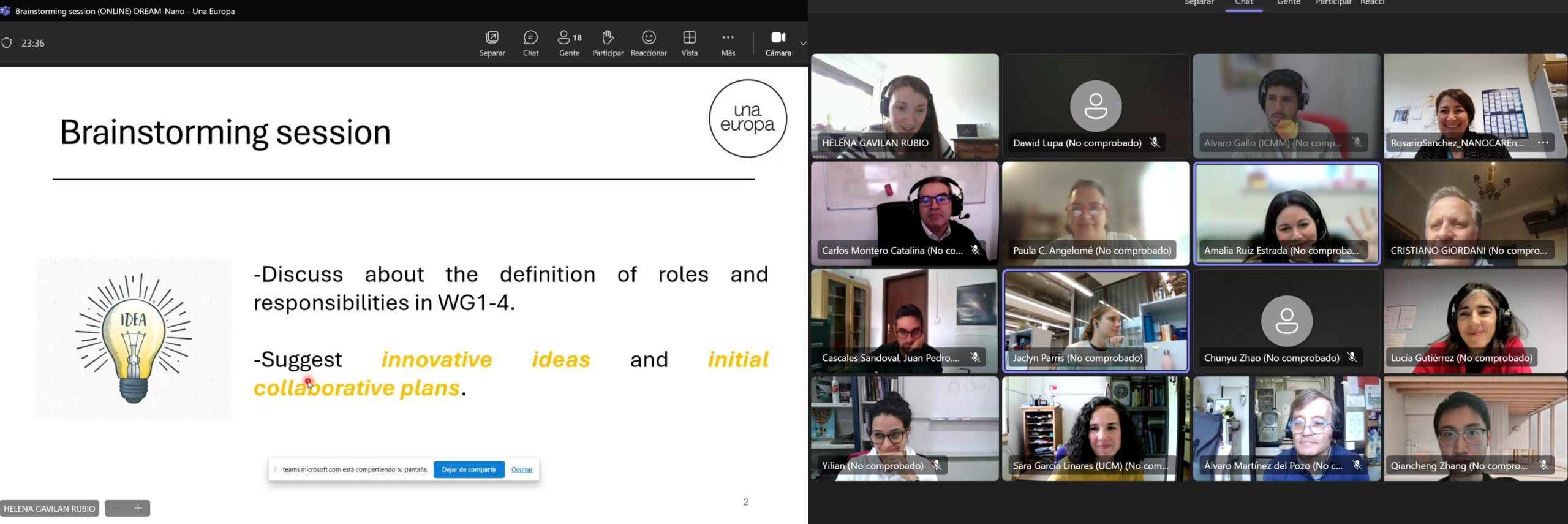NanoCARE 2.0 Engaged in European DREAM-Nano initiative for Smarter, Accessible Cancer Nanomedicine
(Una Europa Seed Funding Scheme)
.
The DREAM-Nano consortium focused on the Designing Responsive Advanced Materials for Nanomedicines held a brainstorming session to propose innovative ideas and initial collaborative plans. Researchers Rosario Sanchez and Lucia Gutierrez attended the meeting as members of the NanoCARE 2.0 network.
DREAM-Nano is a collaborative project of Una Europa Seed Funding focused on the design of advanced and sensitive materials for nanomedicine, with the aim of improving the diagnosis and treatment of cancer. Una Europa Seed Funding launches new collaborative alliances that have the potential to attract external funding as they grow. The DREAM-NANO initiative aims to promote more accessible and cost-effective healthcare models. DREAM-NANO will carry out research, dissemination and training activities. The project is coordinated by Dr. Helena Gavilan of the Complutense University of Madrid and involves several European institutions, including the NanoCARE 2.0 network.
DREAM-Nano is an interdisciplinary project involving experts from different areas within the One Europe network, including Materials of the Future, One Health and Sustainability. The participating institutions are Universidad Complutense de Madrid, University College Dublin, Uniwersytet Jagielloński w Krakowie and Universität Zürich. In addition, the project has the collaboration of numerous academic institutions such as INMA-CSIC, University of Stanford and University of Cape Town, companies such as Blafar Ltd and Helium3 Technologies & Consulting SL together with nanomedicine hubs as third parties from several countries, including the Nanomed_CSIC Hub and NanoCARE 2.0 network.


